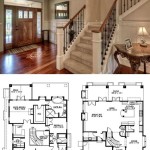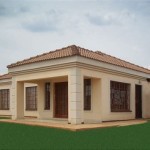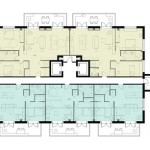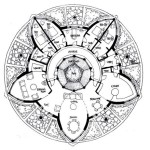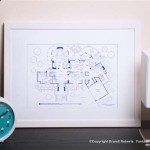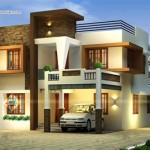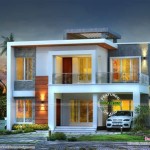Barn Shaped House Plans: A Comprehensive Guide
Barn shaped house plans, also known as barn conversions or barn style homes, have experienced a resurgence in popularity. This design aesthetic draws inspiration from traditional agricultural buildings, adapting their iconic forms into modern residential spaces. The attractiveness of this style lies in its combination of rustic charm, efficient use of space, and potential for sustainable design. Understanding the nuances of barn shaped house plans is crucial for individuals considering this unique architectural approach.
The appeal of barn shaped homes extends across diverse demographics. While initially favored in rural settings, barn style homes are now found in suburban and even urban environments. The adaptability of the design allows for customization to suit specific lot sizes, budgets, and personal preferences. This article explores the various facets of barn shaped house plans, discussing their origins, key features, structural considerations, design options, and potential benefits.
Historical Origins and Design Evolution
Historically, barns served as functional agricultural structures, primarily used for storing crops, housing livestock, and providing workspace for farm activities. Their design was dictated by necessity, emphasizing practicality and efficiency. Key features of traditional barns included large open spaces, high ceilings, gabled roofs, and minimal ornamentation. The materials were typically sourced locally, with wood being the most prevalent choice.
The evolution of barn shaped house plans involved adapting these functional elements into comfortable and aesthetically pleasing living spaces. Architects and designers sought to retain the rustic character of barns while incorporating modern amenities and design principles. This transformation required careful consideration of factors such as insulation, natural light, ventilation, and spatial organization. The resulting barn style homes often feature exposed beams, reclaimed wood, and open-concept layouts, creating a sense of spaciousness and warmth.
The conversion of existing barns into residential properties presents unique challenges and opportunities. Existing structures may require significant structural repairs, foundation stabilization, and modifications to accommodate modern building codes. However, the preservation of historical details and the inherent character of the barn can result in a truly unique and authentic living space. Alternatively, new construction barn style homes offer greater flexibility in terms of design and layout, allowing for the incorporation of contemporary features and energy-efficient technologies.
Key Architectural Features and Design Considerations
Several architectural features define barn shaped house plans. The gabled roof, a hallmark of barn design, provides ample attic space and contributes to the overall aesthetic appeal. The simple, symmetrical form of the barn is often retained, although variations in roof pitch and building dimensions are common. Large windows and skylights are strategically placed to maximize natural light and offer views of the surrounding landscape. The exterior cladding typically consists of wood siding, board-and-batten siding, or metal panels, reflecting the rustic origins of the design.
Interior design elements play a crucial role in creating a cohesive barn style home. Exposed wooden beams, whether original or added as decorative features, are a defining characteristic. Reclaimed wood flooring, barn doors, and rustic hardware further enhance the aesthetic. Open-concept layouts are commonly employed to create a spacious and airy feel, reflecting the vast interior volumes of traditional barns. The use of natural materials, such as stone, brick, and wood, contributes to the overall sense of warmth and authenticity.
Consideration of interior space planning is also essential. The open floor plans common in barn style homes require careful zoning to delineate living areas, dining areas, and kitchens. This can be achieved through the strategic placement of furniture, the use of area rugs, and the creation of visual barriers such as half-walls or changes in flooring material. The height of the ceilings allows for creative design solutions, such as loft spaces, mezzanine levels, and dramatic lighting fixtures. Attention to these details can transform a barn shaped structure into a comfortable and functional home.
Structural Considerations and Building Materials
The structural integrity of a barn shaped house is paramount, particularly when converting an existing barn. A thorough structural assessment by a qualified engineer or architect is essential to identify any weaknesses or deficiencies in the existing framework. Common structural issues in old barns include rotting wood, damaged foundations, and inadequate bracing. Remedial measures may involve replacing damaged structural members, reinforcing existing framing, and improving the foundation system.
The choice of building materials is influenced by both aesthetic considerations and structural requirements. Wood remains a popular choice for framing, siding, and interior finishes, but alternative materials such as steel and concrete are also used in modern barn style construction. Steel framing offers superior strength and durability, while concrete can provide thermal mass and contribute to energy efficiency. The selection of exterior cladding materials should consider factors such as durability, weather resistance, and aesthetic compatibility with the overall design.
Energy efficiency is an increasingly important consideration in barn shaped house plans. The large open spaces and high ceilings of barn style homes can present challenges in terms of heating and cooling. Proper insulation is crucial to minimize energy loss and maintain a comfortable indoor environment. High-performance windows and doors can further reduce energy consumption. Passive solar design principles, such as orienting the building to maximize solar gain in the winter and minimize it in the summer, can also contribute to energy efficiency. Geothermal heating and cooling systems, solar panels, and rainwater harvesting systems can further enhance the sustainability of a barn style home.
Design Options and Customization
Barn shaped house plans offer a wide range of design options and customization possibilities. The basic barn form can be adapted to accommodate a variety of floor plans, from compact one-story designs to expansive multi-story layouts. The interior space can be configured to suit the specific needs of the occupants, with options for open-concept living areas, private bedrooms, home offices, and recreational spaces.
The exterior design of a barn style home can be customized to reflect individual preferences and the architectural character of the surrounding landscape. Variations in roof pitch, window placement, and siding materials can create distinct visual identities. The addition of porches, decks, and patios can extend the living space outdoors and provide opportunities for enjoying the surrounding environment. Landscaping can further enhance the aesthetic appeal of the property, with native plants, stone walls, and gravel pathways complementing the rustic character of the barn.
Modern barn shaped house plans often incorporate contemporary design elements, such as minimalist kitchens, sleek bathrooms, and integrated technology systems. These features can be seamlessly integrated into the rustic framework of the barn, creating a harmonious blend of old and new. The use of contrasting materials, such as stainless steel appliances against exposed wooden beams, can add visual interest and create a unique design aesthetic. The possibilities for customization are virtually endless, allowing homeowners to create a barn style home that reflects their individual style and preferences.
Benefits and Considerations of Barn Shaped Homes
Barn shaped house plans offer several potential benefits. The open floor plans and high ceilings create a sense of spaciousness and airiness, which can enhance the quality of life for the occupants. The rustic aesthetic and use of natural materials can create a warm and inviting atmosphere. The simple, symmetrical form of the barn is inherently energy efficient, and the design can be adapted to incorporate sustainable building practices.
Converting an existing barn can be a cost-effective alternative to building a new home, particularly in areas where land is expensive. The preservation of a historical structure can also provide a sense of connection to the past and contribute to the preservation of local heritage. However, barn conversions can also present unexpected challenges, such as hidden structural problems, regulatory hurdles, and the need for specialized construction techniques.
New construction barn style homes offer greater flexibility and control over the design and construction process. However, building a barn shaped house from scratch can be more expensive than renovating an existing barn, particularly if specialized materials or construction techniques are required. Careful planning and budgeting are essential to ensure that the project stays on track and within budget. The choice between converting an existing barn and building a new barn style home depends on individual circumstances, budget constraints, and personal preferences.

Barn Style House Plans Home Sweet

Barn Style House Plans Chic Designs With A Rural Aesthetic Blog Dreamhomesource Com

Barn Style House Plans In Harmony With Our Heritage

Barndominium 3 Bdrm Bath 1920 Sq Ft Plan 132 1694

Barn Style Home 4 Bedrms 3 5 Baths 2392 Sq Ft Plan 142 1269

122 2 M2 Barn Style House Plan 3 Bed N Plans

Gambrel Roof House Plans Rustic Modern Barn Style America S Best Blog

Barn Style House Plans Chic Designs With A Rural Aesthetic Blog Dreamhomesource Com

Barn Style House Floor Plans Designs

Barn Style Home 4 Bdrm 3 Bath 2875 Sq Ft Plan 132 1656

